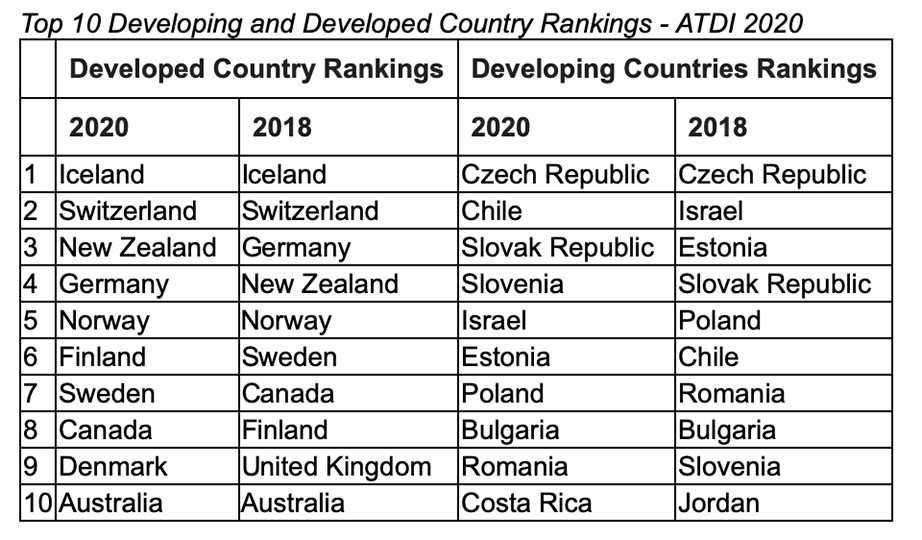A new report should help adventure travel destinations rebuild responsibly and remain competitive in a new environment shaped drastically by the COVID-19 pandemic. The Adventure Tourism Development Index (ATDI) Report and a companion GSTC Global Destination Sustainability Report, take a combined look at the state of destination competitiveness and management across the globe.
The release of the 2020 report by the Adventure Travel Trade Association (ATTA) and George Washington University International Institute of Tourism Studies (GW IITS) report dives into the pillars that make an adventure destination competitive in changing times, and how 191 nations rank in their ability to welcome and host adventure travellers.
The virus has effectively caused a total shutdown of the global tourism industry and is currently forecast to cost the industry 100 million jobs worldwide.
ATTA believes that when tourists are able to travel again, they will be seeking out nature-based, adventure activities, which will be safer than crowded destinations. Destinations around the world will compete to capture the attention and the dollars of adventure tourists.
The ATDI can be used as a tool for examining destination resiliency. In particular, Health, Entrepreneurship and Humanitarian pillars, provide important insight into a destination’s readiness to cope with a public health crisis. It is likely that elements measured within these pillars, such as the number of hospital beds per resident, will become real concerns of future travellers when they select destinations.
This year’s report shows Iceland and the Czech Republic continue to maintain their leadership positions in the ATDI.
“Iceland has maintained its position on the index for three years in a row and the Czech Republic for four. Iceland ranks especially high in Adventure Activity Resources, and the country’s image and visitor experience are viewed positively by the expert panel. The Czech Republic on the other hand consistently scores good points across the 10 pillars measuring competitiveness, making it the most competitive adventure market amongst the developing nations,” remarked Christina Beckmann, Vice President, Global Strategy, at the ATTA.

Among other notable findings, the 2020 ATDI suggests there are reasons to be optimistic about the future of adventure tourism. Countries are increasing their share of protected marine and terrestrial areas, increasing their efforts to mitigate climate change, and extending support to entrepreneurs. At the same time, corruption around the world is increasing, the extinction rate is rising, and big cities, especially in the developing world are becoming more densely populated—all indicators that reduce competitiveness.
“As our world faces increasingly severe crises—due to climate change, health pandemics, terrorism, and other mega-threats—only destinations that are healthy and have a solid sustainable management plan in place are likely to remain competitive in the long-term,” says Seleni Matus, Executive Director, International Institute of Tourism Studies at George Washington University.
This year’s ATDI report is published with a companion report ‘GSTC Global Destination Sustainability Report,’ which is designed to more deeply explore the sustainability dimension of adventure tourism competitiveness worldwide.
The companion report analyzes 24 destinations that have applied the GSTC Destination Criteria and Indicators. These geographically diverse destinations vary in their level of tourism development. When used as a companion piece to the ATDI, the GSTC analysis provides additional insights into destination sustainability challenges and opportunities. While the ATDI is focused on country-level competitiveness insights, the GSTC-D report is regional and local in scope. An in-depth side-by-side analysis of the ATDI and the GSTC-D is featured throughout the document.

